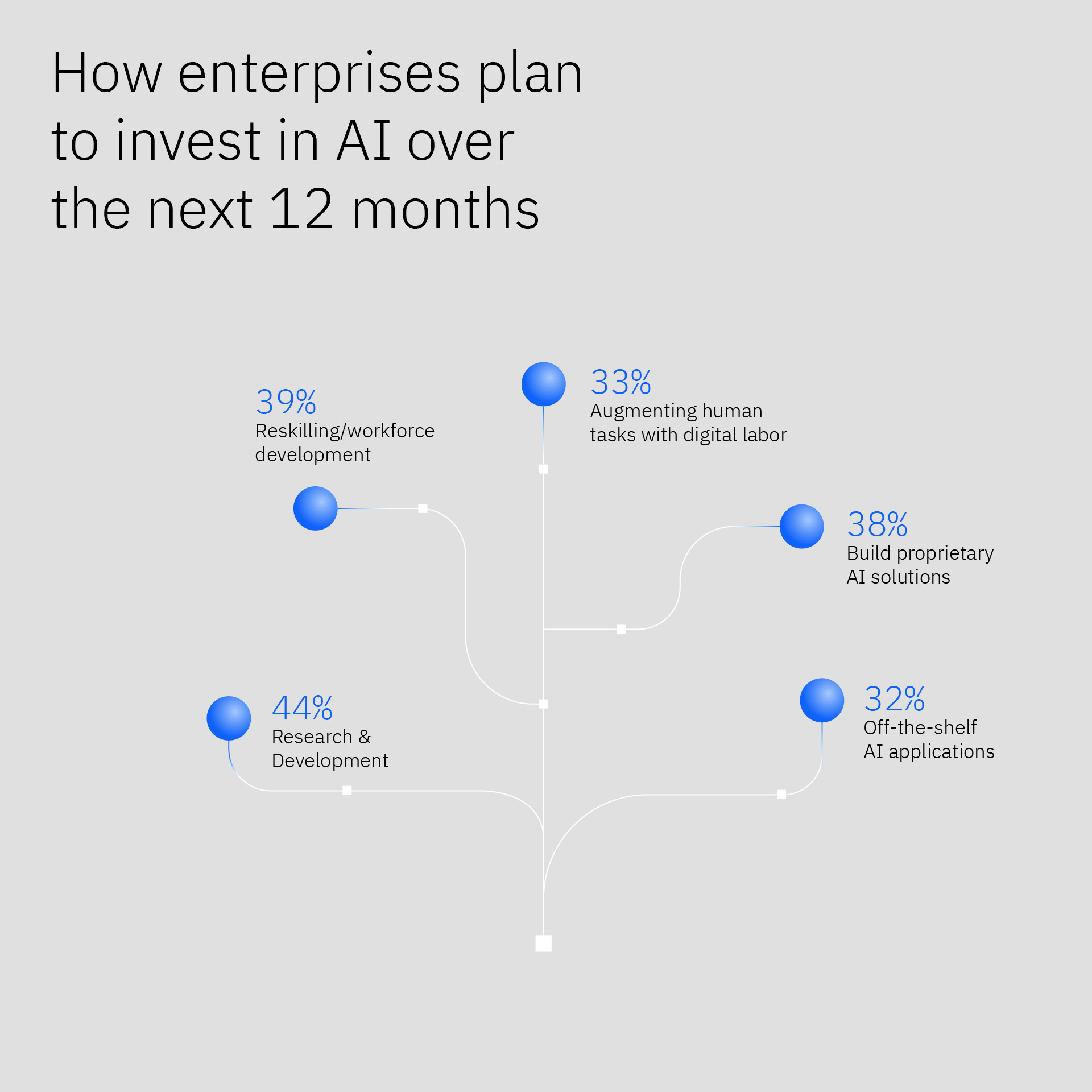
Is Your IBM AI Strategy Boardroom-Ready?
AI is the new frontier for all organizations, and those running IBM i are no exception—but how will you move AI from buzzword to business case to stand up to the boardroom test?
To gain executive buy-in, a business case for AI must go beyond ideas. Executives need proof that artificial intelligence will deliver business value and that the IBM AI strategy includes a clear roadmap for AI adoption, scalability, and risk management.
With the right approach, AI can enhance IBM i’s capabilities, from cost savings to new revenue streams. A strong business case—rooted in solid ROI, strategic alignment, and a scalability plan that supports data quality and organizational growth—will earn the green light.
Learn how to develop a solid IBM AI strategy case that leaves no room for hesitation and sets AI on a path to deliver tangible, lasting value:
1. Tie AI to Clear Business Goals
In IBM i environments, your organization likely already relies on the system’s vast, historical data to manage key processes. The question is how to unlock AI’s potential to amplify these efforts. The business case should start with high-impact areas where AI can drive value.
For IBM i systems, consider these areas:
- Operational efficiency: Automate repetitive tasks, reduce manual errors, and optimize processes.
- Customer experience: Use AI to analyze customer patterns, predict needs, and enhance experiences.
- Risk management: Improve fraud detection and strengthen decision-making with AI insights from rich IBM i data.
For companies new to AI, initial experimentation through prototypes is both a practical and recommended approach. However, this experiment must follow a structured path and guide the organization from initial testing to effective application and scalability.
For an in-depth look at how to develop a robust IBM AI strategy, download our whitepaper—Enterprise AI for IBM i: Craft an AI Transformation Strategy for Growth.
2. Quantify AI’s Value in Terms of ROI

C-level executives prioritize investments with measurable returns, and AI is no exception —they want to see hard numbers and concrete outcomes.
AI-driven initiatives offer potential gains such as:
- Cost savings: Automate routine tasks or reduce error rates to cut operational costs.
- Revenue growth: Use AI-driven customer insights to increase cross-selling opportunities or improve customer retention.
- Improved productivity: Free up human resources for high-value tasks by offloading repetitive work to AI.
- Unlock more value: Reach new customers, develop distinct product, and design alternative business models
ROI calculation requires realistic estimates. Start with the talent challenge: early AI teams benefit from generalists who bring adaptability alongside technical experts focused on AI’s specific demands. Unlike traditional projects, AI initiatives call for a new approach to project management, with emphasis on flexibility and iterative development.
During cost estimation, include budget considerations for a Minimum Viable Product (MVP), data engineering, and stable operating models. Factor in contingencies for unexpected model behavior—where AI performs differently than anticipated. Present ROI clearly: outline exactly how AI reduces costs, grows revenue, or speeds up processes.
3. Secure Data Readiness
AI may be powerful, but it’s only as good as the data that fuels it. Data readiness is one of the most critical components of a successful AI implementation.
IBM’s Global AI Adoption Index 2023 shows that 40% of organizations are still in AI experimentation or exploration phases. The top barriers include limited AI skills (33%), data complexity (25%), and ethical concerns (23%).

IBM i systems are often rich in valuable data, but data quality and accessibility issues can pose significant barriers. Data readiness impacts two key areas:
- Cost efficiency: Data preparation often represents a large share of AI costs and heavily influences the financial feasibility of each project. Quality data reduces processing needs, cuts costs, and improves ROI.
- Competitive advantage: Over time, a well-prepared data foundation strengthens market position and enables economies of scope and scale. With a unified data approach, multiple AI models can draw from the same sources to amplify impact across projects.
Focus on these elements for effective data preparation:
- Data quality: Remove noise and redundancy to ensure clean, relevant data. High-quality data generates accurate, actionable insights.
- Data integration: Enable seamless flow across IBM i and other platforms to provide AI with a comprehensive, cross-functional view.
- Data governance: Set clear ownership, access controls, and cybersecurity protocols to maintain data reliability and protect sensitive information.
Data preparation can be complex, but it’s essential for successful AI integration. Prepare your data to reduce risks, improve AI accuracy, and ensure every insight AI provides is valuable.
To understand how to prepare data for IBM i, join our exclusive AI strategy webinar and explore actionable insights on IBM AI strategy, roadmap creation, and use case prioritization.
4. A Scalable Infrastructure and Talent Pool
AI requires more than a one-time setup. A strong IBM AI strategy means scalable systems and skilled talent who understands the nuances of AI and IBM i:
i. Infrastructure:
Choose the right infrastructure for AI—whether on-premises, cloud-based, or hybrid. Beyond the infrastructure itself, several foundational technology considerations support successful AI deployment:

- Bias Mitigation: Develop safeguards to prevent bias from entering the model during training.
- Model Selection: Identify the most suitable machine learning approach (supervised, unsupervised, or reinforcement) based on acceptable error margins for the project.
- Expertise: Engage AI/ML specialists or external partners to strengthen in-house expertise.
- Foundational Components: Confirm availability of essential infrastructure elements like cloud services, hardware (such as GPUs), datasets, secure storage, and tools.
- DevSecOps: Form dedicated DevSecOps teams to integrate security into development and operations from the outset.
- Model Maintenance: Update and fine-tune the model regularly, with fresh data and apply transfer learning techniques to enhance accuracy over time.
ii. Skill:
Successful AI initiatives require skilled data scientists and machine learning experts. Consider these people-focused strategies:
- Bring in digital natives who challenge the status quo and introduce fresh perspectives.
- Evaluate whether to upskill internal talent, recruit new team members, or collaborate with external partners to bridge skill gaps.
5. Mitigate Risks: Ethical AI and Governance Are Essential
As AI advances, a strong governance framework ensures its responsible and ethical use. AI models carry potential risks, from unintended bias to significant societal impacts. A robust business case for AI should demonstrate how the organization mitigates these risks through ethical governance and proactive oversight.
- Leadership Commitment: Adopt a technology-driven mindset centered on continuous innovation and measurable value creation.
- AI Education: Provide foundational AI/ML training across the organization to improve AI knowledge, promote collaboration, and facilitate better AI adoption.
- Risk Acceptance: Recognize that failure may occur during experimentation. Embrace these instances as learning opportunities.
- Ethics Oversight: Maintain focus on ethical considerations throughout AI projects, ensuring alignment with corporate values and societal standards.
Embed these governance principles within your AI business case to show leadership how IBM AI will support both business goals and social responsibility.
6. Define Success Metrics and Milestones
80% of AI projects fail and cost companies billions in wasted resources. Success in AI projects is rarely linear. To keep your business case credible, set clear milestones and metrics that outline how the project will progress and when leadership can expect to see results.
For flexible and ambitious AI initiatives, OKRs (Objectives and Key Results) provide an outcome-focused framework that aligns with strategic priorities. OKRs define and track specific, time-bound goals, that concentrate on impactful results. In contrast, KPIs (Key Performance Indicators) serve as quantitative measures for ongoing performance, to capture stable, repeatable operations.

Define specific OKRs and KPIs for your IBM AI roadmap:
- Efficiency OKRs: Set objectives for time saved on routine tasks or reductions in operational costs, focusing on measurable outcomes
- Customer-Focused OKRs: Establish goals for improvements in response time, customer satisfaction, or retention rates to measure AI’s impact on customer experience.
- Predictive Accuracy KPIs: Track accuracy in AI predictions for areas like fraud detection or demand forecasting, to monitor model performance.
7. Address Organizational Change and Risk Management
AI adoption may meet resistance and raise new compliance or security considerations. The business case should account for risk mitigation and change readiness.
Considerations include:
- AI governance: Establish ethical AI frameworks that address fairness and transparency. Ensure leadership commitment to a value-driven, technology-focused approach that supports responsible AI adoption.
- Change management: Develop clear communication plans that involve stakeholders at all levels. Frequent, consistent communication fosters collaboration, aligns teams with AI goals, and supports the organization’s vision for IBM AI.
- Cost Management: Track and control AI-associated costs to ensure sustainability and maintain alignment with financial goals.
Move Beyond Ideas—Put AI to Work
Fresche’s AI-Celerate is designed specifically for IBM i environments. This 12-week program offers a structured approach to cover every stage of AI adoption, from strategy to use case prioritization and business case development to roadmap creation:
With AI-Celerate, you gain:
- Insight into AI technologies and their potential impact on your industry.
- Identify and prioritize AI initiatives with the highest impact.
- Data-backed business case that secures leadership buy-in.
- Clear AI objectives, scope, OKRs, and KPIs for focused results.
- Detailed AI roadmap to guide your implementation journey.
With Fresche, you have a partner who brings clarity, expertise, and a structured approach tailored to IBM i systems.
Start now with a free AI consultation. Meet with our AI experts to discuss your goals, explore AI’s role in IBM i, and move confidently toward AI integration.


